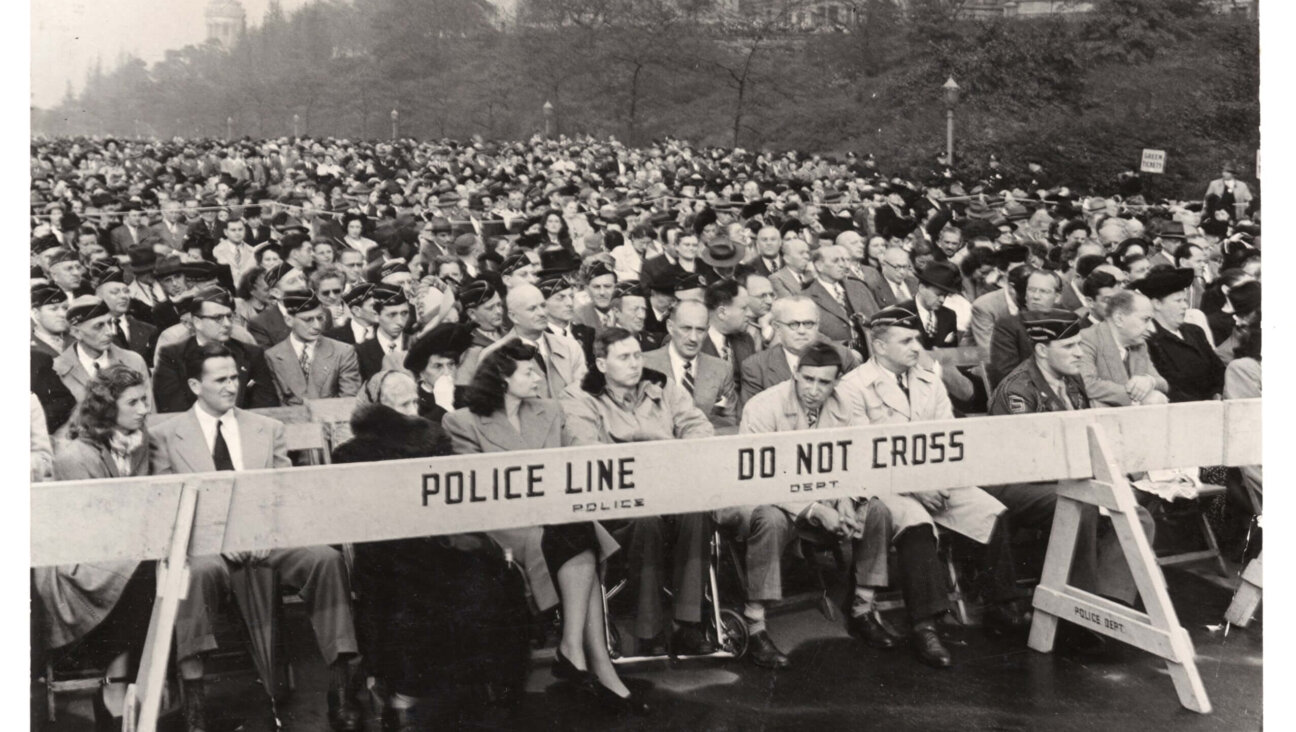Discovering the Newest Jewish Genetic Disease

Investigators: Dr. Orly Elpeleg (above) and Dr. Joseph Gleeson (below) were on separate teams that published findings regarding a mutation that causes Joubert syndrome among Ashkenazi Jews.
One day, about four years ago, a young couple came to Dr. Alan Shanske’s office looking for help. They had already been to numerous doctors, but none of them was able to diagnose their 4-year-old son.

Investigators: Dr. Orly Elpeleg (above) and Dr. Joseph Gleeson (below) were on separate teams that published findings regarding a mutation that causes Joubert syndrome among Ashkenazi Jews.
The boy, Shanske recalled, was developmentally delayed, uncoordinated with poor muscle tone, had experienced breathing problems as an infant and made involuntary jerky eye movements. Shanske, who until very recently was medical director of the Craniofacial Center at the Children’s Hospital at Montefiore in the Bronx, had seen this grouping of symptoms before. They indicated Joubert syndrome, a rare genetic disorder he had seen only some 10 times prior during a career reaching back to the late 1970s.
Eager to confirm his diagnosis, Shanske tested the boy for the known genetic mutations for Joubert, but each time the tests came back negative. The parents, both Ashkenazi Jews, soon had two more children, and each one was born afflicted with the same disease.
“By the third child’s birth,” Shanske said, “I knew it must be a rare recessive disorder among Ashkenazi Jews.” This was the first time Shanske saw Joubert in a Jewish family.
Two recent independent studies confirm that a mutation for Joubert syndrome has a significant presence among Ashkenazi Jews and should be screened for among couples intending to have children, experts said. A number of labs in Israel and the United States are expected to provide screening in the near future.
Late last year, researchers at Hadassah-Hebrew University Medical Center in Jerusalem and at Cold Spring Harbor Laboratory in New York state found that a single mutation on a single gene gave rise to Joubert syndrome in Ashkenazi Jews. In January, they published their findings in The American Journal of Human Genetics.
A second group of researchers, co-directed by labs at the University of California, San Diego and at the Mendel Institute in Rome, published the same findings in Nature Genetics in May. This group, which examined Joubert across several populations, also found other mutations on the same gene that are linked to Joubert in non-Jews.
The two papers calculated that among Ashkenazi Jews the approximate carrier frequency for Joubert, or the chance that a healthy individual is carrying the recessive gene, is between 1 in 92 and 1 in 100. This rate does not place Joubert among disorders with the highest carrier frequencies for Ashkenazi Jews, such as Tay-Sachs or familial dysautonomia (both 1 in 30). But it is on par with the carrier frequency among Ashkenazi Jews for such disorders as Bloom’s syndrome (1 in 100) or Niemann-Pick disease type A (1 in 90). When two parents are both carriers of a mutation for the same recessive genetic disorder, their children have a 25% chance of being born with that disorder.
“When a disease reaches a carrier frequency of about 1 in 100, it starts to be a problem, because then patients are being born with a high enough frequency to be noticed,” said Dr. Orly Elpeleg, director of the genetics department at Hadassah-Hebrew University Medical Center and head of the Hadassah research team.
First identified in 1969 by Canadian neurologist Marie Joubert, Joubert syndrome is characterized by poor muscle tone, lack of coordination, abnormal eye movements and mental disabilities. Individuals are born with a missing or underdeveloped portion of the mid-hindbrain called the cerebellar vermis, which controls and fine tunes voluntary muscle movements. Joubert sufferers may live a normal lifespan but remain unable to care for themselves throughout their lives.
A disease found among all ethnic groups, Joubert is part of a growing group of disorders recognized as ciliopathies in which the cilia, hair-like “antennae” on the outside of the cell, are either missing or impaired. “Cilia are how a cell senses its environment and knows how to interpret cues,” explained Dr. Joseph Gleeson, a professor of neurosciences at U.C. San Diego and co-director of the study whose results were published in Nature Genetics. When cilia are missing, the embryo develops abnormalities of the brain and other organs, like the kidneys and eyes.
The types and severity of Joubert vary somewhat. According to Gleeson, about half of those with Joubert experience some degree of kidney failure and/or blindness. Of Gleeson’s Ashkenazi patients, about two-thirds have developed kidney disease, but blindness has been rare, he said.
A key finding for Joubert occurred in 1997, when scientists discovered that an MRI of patients with the disease revealed a “molar tooth”-shaped structure in their brains. Up until this discovery, the disease often went undiagnosed, experts said. Joubert still remains “relatively hard to diagnose,” explained Dr. Daniel Doherty, assistant professor of pediatrics at the University of Washington.
A major behind-the-scenes player in the successful effort to identify the Joubert mutation among Ashkenazi Jews was Dor Yeshorim, a Brooklyn-based group that runs genetic screening programs largely targeting the ultra-Orthodox community. It’s founder and director, Rabbi Joseph Ekstein, first contacted Elpeleg in the summer of last year.
“Rabbi Ekstein came to us and brought samples of patients with the same condition,” Elpeleg said. “Parents had come to him requesting his help, because they were having trouble marrying their unaffected children.” Although Dor Yeshorim does not give out actual test results, it informs a prospective couple or families if a match would be genetically unadvisable based on the carrier status of the two individuals considering marriage. “He said he wanted us to find the gene and mutation quickly for purposes of carrier detection,” Elpeleg said.
Elpeleg and her team examined the samples using a method called homozygosity mapping, whereby scientists, suspecting a common ancestor, look for a region in the DNA of affected individuals from different families that is exactly the same from person to person. “We found all the affected children shared the same tiny piece of DNA inherited from the same ancestor,” Elpeleg said. By sequencing this segment and doing further analysis, they located the gene and the mutation responsible for Joubert.
Dor Yeshorim, whose representatives declined to comment for this article, also reached out to another lab for help on the issue. In September 2009, Ekstein phoned Yaniv Erlich, a geneticist at Cold Spring Harbor Laboratory who has been collaborating with Dor Yeshorim on various projects.
“Ninety-nine percent of a person’s genome does not code for actual genes,” explained Erlich, “so we recently developed a technology that allows you to immediately select only the regions that contain actual genes. We can therefore sequence the genes very quickly, in a week or 10 days, which is like a dream for geneticists.” In December of 2009, some weeks after the Hadassah group, Erlich found the same gene and mutation responsible for Joubert — confirming Elpeleg’s group’s results.
The first genes and mutations for Joubert were located in 2004. With the latest findings, there are now 10 known genes associated with Joubert.
“What is striking is that all Ashkenazi patients have this one mutation,” Gleeson said of his study. “This is the only common mutation we have ever found for the disease.” Almost all of the mutations found for non-Jewish Joubert patients so far have been “private” mutations, meaning that no two families have the same one.
“It must come from the same ancestor,” said Gleeson of the Ashkenazi mutation. His study dates the founder of this mutation back at least 20 generations, or some 400 years ago. “This is exciting, because now it will be possible to screen for it and prevent the disease,” he added.
Currently, Prevention Genetics, a commercial lab in Wisconsin, offers screening for the Ashkenazi mutation. Screening is expected to be available at other labs in both the United States and Israel in the near future. The Emory Jewish Genetic Disease Program at the human genetics department at Emory University in Decatur, Ga., says it expects to add Joubert syndrome to its panel of tests in September, as does the Victor Center for the Prevention of Jewish Genetic Diseases.

I hope you appreciated this article. Before you go, I’d like to ask you to please support the Forward’s award-winning journalism this Passover.
In this age of misinformation, our work is needed like never before. We report on the news that matters most to American Jews, driven by truth, not ideology.
At a time when newsrooms are closing or cutting back, the Forward has removed its paywall. That means for the first time in our 126-year history, Forward journalism is free to everyone, everywhere. With an ongoing war, rising antisemitism, and a flood of disinformation that may affect the upcoming election, we believe that free and open access to Jewish journalism is imperative.
Readers like you make it all possible. Right now, we’re in the middle of our Passover Pledge Drive and we need 500 people to step up and make a gift to sustain our trustworthy, independent journalism.
Make a gift of any size and become a Forward member today. You’ll support our mission to tell the American Jewish story fully and fairly.
— Rachel Fishman Feddersen, Publisher and CEO
Join our mission to tell the Jewish story fully and fairly.
Our Goal: 500 gifts during our Passover Pledge Drive!
























